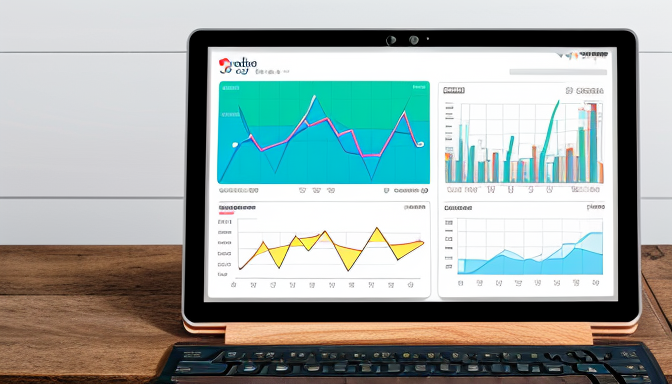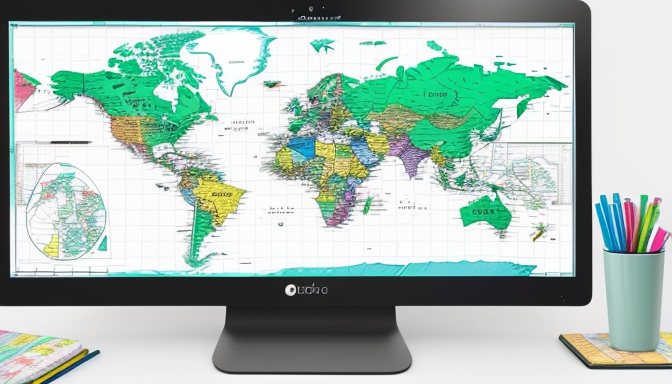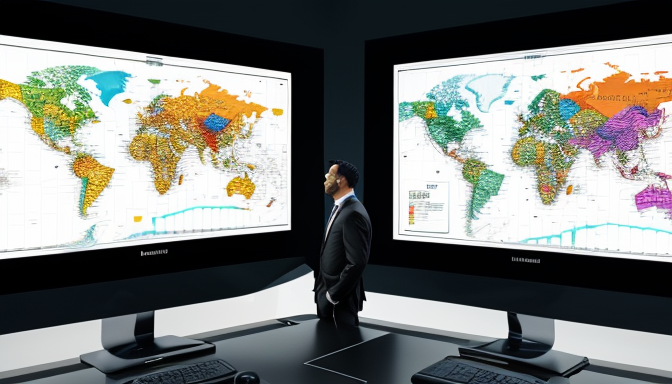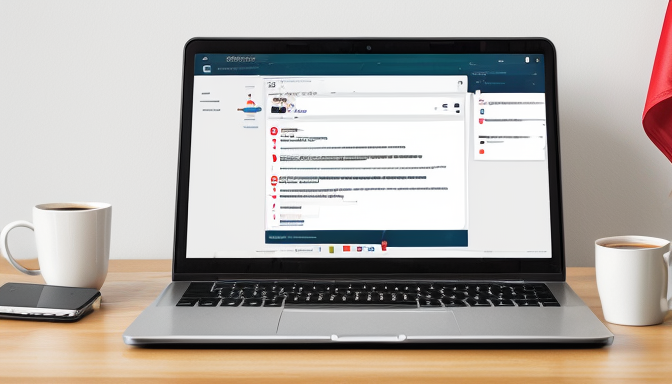
In today’s fast-paced world, making informed decisions is crucial for any organization. This is where Maps Insights comes into play. By leveraging Maps Insights, teams can gain a clearer picture of their operational landscape. Think of it as having a high-tech compass that not only shows you where you are but also points you to where you need to go. Imagine being able to visualize data in a way that highlights opportunities and challenges. That’s the power of Maps Insights.
So, how can you truly ? It starts with understanding the data at your fingertips. Maps Insights provides a wealth of information that can help you see patterns and trends. For example, if you’re analyzing customer behavior, Maps Insights can show you where most of your customers are located. This allows you to tailor your marketing strategies more effectively. It’s like having a map that reveals the hotspots in your business landscape.
Regularly utilizing Maps Insights can lead to significant improvements in decision-making processes. When teams actively engage with this tool, they can adjust their strategies based on real-time data. This not only enhances collaboration across departments but also promotes a culture of data-driven decision-making. Have you ever been in a meeting where everyone is guessing about what the numbers mean? With Maps Insights, those days are over. You’ll have the facts right in front of you, making discussions more productive and focused.
Moreover, incorporating Maps Insights into your planning can be a game-changer. It allows you to align your projects with organizational goals effectively. For instance, if your goal is to expand into new markets, Maps Insights can guide you in identifying the best locations to target. By analyzing demographic data and market trends, you can make decisions that are not only strategic but also grounded in reality. This leads to better outcomes and a higher chance of success.
In summary, the key to leveraging Maps Insights lies in its frequent review and analysis. By doing so, you ensure that your organization remains agile and responsive to changes. You’ll be equipped to tackle challenges head-on and seize opportunities as they arise. Remember, in the world of business, knowledge is power. And with Maps Insights, that power is at your fingertips.

Review Maps Insights Frequently
When it comes to making smart decisions in your organization, reviewing Maps Insights frequently is a game-changer. Think of it like checking the weather before a big trip. You wouldn’t want to get caught in a storm without an umbrella, right? Regularly assessing these insights ensures that you have the latest data at your fingertips, allowing you to adjust your strategies and operations swiftly. This is not just about keeping up; it’s about staying ahead.
Imagine you’re navigating a ship. If you only look at your maps once, you might sail into dangerous waters. But if you check your Maps Insights regularly, you can steer clear of obstacles and find the best routes. This proactive approach helps you identify what’s working and what isn’t. It’s like having a compass that points you in the right direction.
Moreover, frequent reviews of Maps Insights can reveal patterns and shifts that might otherwise go unnoticed. For instance, if you notice a sudden spike in customer interest in a particular area, you can pivot your marketing efforts accordingly. But if you only look at the data once a month, you might miss that crucial opportunity. By staying on top of these insights, you can make timely decisions that resonate with your audience.
So, how often should you review these insights? While it depends on your organization’s pace, a good rule of thumb is to check them at least weekly. Here’s a quick breakdown of what to focus on during your reviews:
- Data Relevance: Ensure the information is current.
- Performance Metrics: Look for any significant changes.
- Team Feedback: Encourage your team to share their observations.
Incorporating these practices not only enhances your decision-making process but also fosters a culture of collaboration within your team. When everyone is aligned and informed, you’re more likely to achieve your organizational goals. Remember, the key to effective planning and execution is rooted in the insights you gather. So, make it a habit to dive into your Maps Insights frequently. You’ll be amazed at how much clearer your path becomes.

Analyze Maps Insights for Patterns
When you delve into Maps Insights, you open a treasure chest of data. But here’s the catch: it’s not just about collecting data; it’s about understanding it. Analyzing Maps Insights for patterns can be a game-changer for your organization. Why? Because recognizing patterns is like finding the pulse of your operations. It tells you what’s working and what’s not.
Think about it. Have you ever noticed how certain trends emerge when you look closely at data? Maybe your sales spike in a specific region during a particular season. Or perhaps, there’s a consistent drop in customer engagement at certain times of the day. By identifying these trends, you can make informed decisions that steer your organization in the right direction.
For instance, let’s say you run a delivery service. By analyzing Maps Insights, you might discover that deliveries in one area are consistently delayed due to traffic patterns. This information is vital. You can adjust your routes or schedules to avoid those bottlenecks. It’s all about being proactive rather than reactive. And who doesn’t want to be ahead of the game?
To make the most of your analysis, consider these key steps:
- Gather Data: Start by collecting data from various sources within your Maps Insights.
- Look for Trends: Identify recurring themes or patterns over time.
- Make Comparisons: Compare different timeframes to see how changes affect outcomes.
- Visualize Data: Use charts or graphs to spot patterns more easily.
But it doesn’t stop there. Once you’ve identified these patterns, the next step is to act on them. Let’s say you spot a trend indicating that customers prefer evening deliveries. You can adjust your staffing to meet this demand. This isn’t just smart; it’s essential for staying competitive.
Moreover, analyzing Maps Insights can also help you predict future behaviors. It’s like having a crystal ball. By understanding past patterns, you can make educated guesses about what’s likely to happen next. This foresight can guide your strategic planning, ensuring that your organization is always a step ahead.
In conclusion, analyzing Maps Insights for patterns is not just a task; it’s a pathway to better decision-making. By diving deep into your data, you can uncover insights that lead to improved efficiency and collaboration across teams. Remember, the more you understand your data, the better equipped you are to make decisions that align with your organizational goals. So, roll up your sleeves and start digging into those Maps Insights!

Use Maps Insights in Planning
When it comes to making decisions in your organization, Maps Insights can be a game-changer. Imagine trying to navigate a new city without a map. Confusing, right? That’s how planning feels without the right insights. By utilizing Maps Insights, you can steer your projects in the right direction, ensuring that every decision is backed by solid data.
Integrating Maps Insights into your planning processes isn’t just a nice-to-have; it’s essential. For instance, when you analyze geographic data, you can see where your customers are concentrated. This knowledge allows you to tailor your strategies effectively. You wouldn’t send your sales team to a region where there are no potential customers, right? Instead, you can focus your resources where they will have the most impact.
Consider this: if your team is planning a new marketing campaign, using Maps Insights can highlight the best locations to target. You can analyze historical data to predict which areas might yield the highest returns. It’s like having a crystal ball that shows you where to invest your effort. This approach not only saves time but also enhances collaboration among teams, as everyone works from the same set of actionable insights.
Moreover, incorporating Maps Insights into your planning can lead to greater efficiency across the board. When all departments have access to the same data, communication improves. Teams can align their strategies and avoid duplicating efforts. Think of it as a well-rehearsed orchestra, where every musician knows their part. The result? A harmonious and successful project outcome.
Let’s break it down further. Here are a few ways to effectively use Maps Insights in your planning:
- Identify Key Trends: Look for patterns in your data that can inform future strategies.
- Allocate Resources Wisely: Use insights to determine where to focus your time and budget.
- Enhance Team Collaboration: Share insights across departments to create a unified approach.
In conclusion, the power of Maps Insights in planning cannot be overstated. By leveraging these insights, you can make informed decisions that align with your organizational goals. It’s about being proactive rather than reactive. So, the next time you sit down to plan, remember to tap into the wealth of information that Maps Insights offers. Your projects—and your team—will thank you for it!
Frequently Asked Questions
- What are Maps Insights?
Maps Insights are analytical tools that provide valuable data about location-based trends and patterns. They help organizations make informed decisions by visualizing data on maps, allowing teams to see how different variables interact in real-time.
- How can I leverage Maps Insights for better decision-making?
You can leverage Maps Insights by regularly reviewing the data to ensure it remains relevant. This means using the insights to adapt your strategies based on the latest trends, which can significantly enhance your decision-making process.
- Why is it important to analyze Maps Insights for patterns?
Analyzing Maps Insights for patterns helps you identify trends that can inform future actions. Just like a detective looking for clues, spotting these trends allows you to predict outcomes and adjust your strategies accordingly.
- How can Maps Insights improve planning in my organization?
Incorporating Maps Insights into your planning processes ensures that your decisions are data-driven. This alignment with organizational goals can lead to greater efficiency and success, much like having a well-drawn map before setting off on a journey.
- Can Maps Insights help in team collaboration?
Absolutely! By sharing Maps Insights across teams, everyone can access the same data, which fosters collaboration. It’s like having a common language that helps teams work together more effectively towards shared goals.



